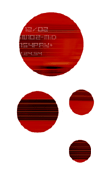

 |
 |
scientific program electroacoustic musics around set theory music analysis tools musicnetwork workshop professional week ircam forum workshops free software for music international multichannel sound forum performing arts and technologies dance and new technologies access to sound heritage thematic evenings demonstration stands artistic program set theory concert music in creation concert cursus concerts opera "one" sound installations open house weekend technologies gallery conferences demonstrations workshop-performances workshops and films ircam laboratories linux install-party concert distribution on internet associated events resonances night at glaz'art émilie simon at la cigale suguru goto reseaunances guided tours of ircam and the multimedia library resonances in pictures resonances 2002 
|
ANALYSIS AND SYNTHESISActivitiesThe Analysis/Synthesis Team conducts research and development activities based on the analysis, tranformation, and synthesis of sound signals. The analysis of sounds includes methods allowing the extraction or automatic structuring of various kinds of signal information, such as the fundamental frequency, or spectral evolutions which determine the pitch and the timbre of the perceived sound. Information which is not strictly musical is also taken into account, and interests sectors such as industrial acoustics, sound design, and multimedia (for example, automatic indexing of sound recordings). The methods used rely on signal processing, statistical analysis, information theory, learning techniques, and form recognition, but also on knowledge about sound perception and sound production by acoustic systems. The techniques of transformation and sound synthesis are first conceived to respond to the needs of musicians for the creation of new sounds and new musics. A typical example is the synthesis of a virtual choir by a computer on an opera stage. This work also finds numerous applications in sectors such as mobile telephones, video games, navigation devices, and virtual reality in general. Analysis and synthesis rely partly on the development of signal models (modelling the effects of sounds produced in terms of signals), and partly on physical models (acoustic modelling of production causes in terms of sound sources). These models are implanted, in the form of software for PC or Macintosh, complete with graphical interfaces specifically developed for professional users and non-professional users alike - musicians, but also sound engineers, acousticians, and music lovers. Areas of ExpertiseSignal processing, statistics, information theory, learning techniques, form recognition. Themes and Associated ProjectsSignal models (Additive, Super VP, Sinola, F0, Carterpillar, Alignement, Séparation), Sound characterisation (Descripteurs, CUIDADO, ECRINS, Indexation), Acoustic system models (Instruments, Inversion, Estimation), Synthesis control and musical applications (Chorales, Phase, Geste). Team Members
CollaborationsENST (Paris), INRIA (Rennes), Ecole des Mines de Paris, CEA-Saclay, France-Télécom R&D, INA-GRM, Université de Nantes, INPG-Grenoble, Berkeley University (California), San Jose University (California), UPF-Barcelona, Creamware, Artspages, Digigram, Hebrew University (Jerusalem), Université d'Anvers, University of Alberta in Edmonton. |
|||||||||||||||||||||||||||||||
 |
Organization Committee Copyright Ircam-Centre Pompidou 2003 |